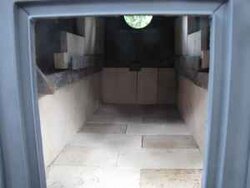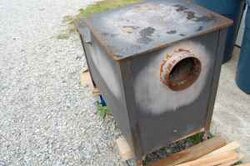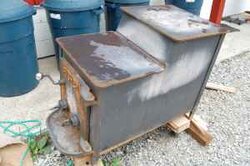New to the site here. Incredible info to say the least. I recently moved into a house with what appears to be Papa Bear from the late 70's (based on my reading). Newer spring shape on the door handle and 5 fins on the two dials. No baffle of any kind for the rear opening. I grew up in a house with wood stoves but have zero experience with Fishers, and have a couple of newbie questions I am hoping you can help with:
1) The previous occupants left a fireplace grate inside the stove and clearly were using it with wood. My first thought is that this is not only unecessary, but also potentially dangerous. Am I right, or is there a situation where a grate would be used in a stove like this (never heard of one).
2) Are my dials bad? The right one moves about 3 turns before being fully opened and the left about 2. If that is bad, could they just be clogged or definitely broken?
3) As far as the bricks go, should I be concerned about loading the logs too high (assuming I never use that grate)? I noticed the bricks only go about halfway up. Any concerns with higher logs ingiting above brick level?
Thanks in advance.
1) The previous occupants left a fireplace grate inside the stove and clearly were using it with wood. My first thought is that this is not only unecessary, but also potentially dangerous. Am I right, or is there a situation where a grate would be used in a stove like this (never heard of one).
2) Are my dials bad? The right one moves about 3 turns before being fully opened and the left about 2. If that is bad, could they just be clogged or definitely broken?
3) As far as the bricks go, should I be concerned about loading the logs too high (assuming I never use that grate)? I noticed the bricks only go about halfway up. Any concerns with higher logs ingiting above brick level?
Thanks in advance.




